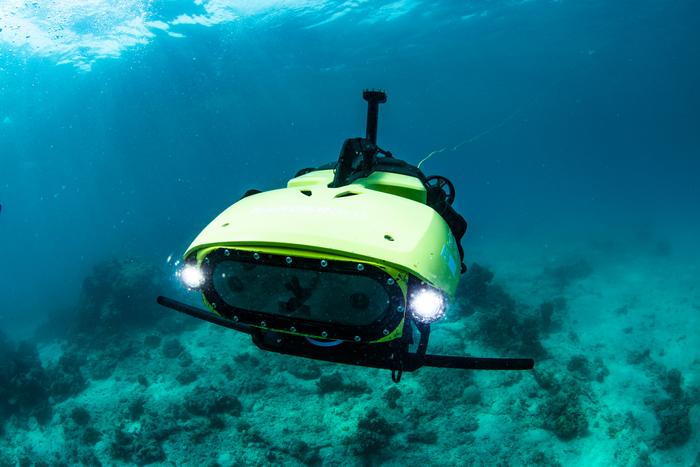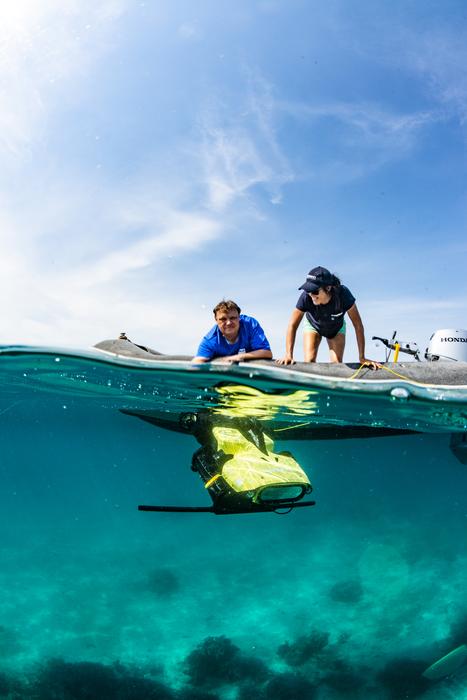An undersea robot ‘crop duster’ has been put to work on the Great Barrier Reef in an effort to repopulate areas scorched by coral bleaching.
A week-long pilot of the submarine drone – dubbed LarvalBot – has seen it disperse thousands of microscopic baby corals (coral larvae) to damaged reef sites.
“During this year’s trial, the robot was tethered so it could be monitored precisely but future missions will see it operate alone and on a much larger scale,” said Professor Matthew Dunbabin from QUT (Queensland University of Technology).
“Using an iPad to program the mission, a signal is sent to deliver the larvae and it is gently pushed out by LarvalBot. It’s like spreading fertiliser on your lawn. The robot is very smart, and as it glides along we target where the larvae need to be distributed so new colonies can form and new coral communities can develop.”
The robot has capacity to carry around 100,000 coral larvae per mission. The larvae were reared by harvesting millions of coral eggs and sperm from areas of the reef that have recovered from the back-to-back bleaching events of 2016 and 2017, during the annual spawning event at the end of last month.
The ‘spawn slicks’ were collected using large floating catchers, then taken to resettlement sites where larvae were reared in floating pools. Scientists have called the process ‘coral IVF’.

It’s predicted the larvae produced will grow into thermally tolerant corals, and so better able to survive future bleaching events.The larvae were then taken to heavily degraded parts of the northern Great Barrier Reef, and released.
LarvalBot was used to release larvae at Vlasoff Reef, near Cairns in north Queensland.
“The robot gently releases the larvae onto damaged reef areas allowing it to settle and over time develop into coral polyps or baby corals,” Dunbabin said, adding that the robot was like “an underwater crop duster”.

LarvalBot was reengineered from QUT’s RangerBot which uses computer vision to navigate underwater and inject crown-of-thorns starfish – a reef-eating coral predator that is responsible for 40 per cent of the reef’s decline in coral cover – with a deadly solution to control numbers.
The project as a whole is a large scale collaboration bringing together scientists from all over the world. Work on the LarvalBot was funded with the $300,000 prize money from the Great Barrier Reef Foundation’s Out of the Blue Box Reef Innovation Challenge.
“With further research and refinement, this technique has enormous potential to operate across large areas of reef and multiple sites in a way that hasn’t previously been possible,” said the larval restoration project lead, Southern Cross University’s Professor Peter Harrison.
“We’ll be closely monitoring the progress of settled baby corals over coming months and working to refine both the technology and the technique to scale up further in 2019,” he added.


